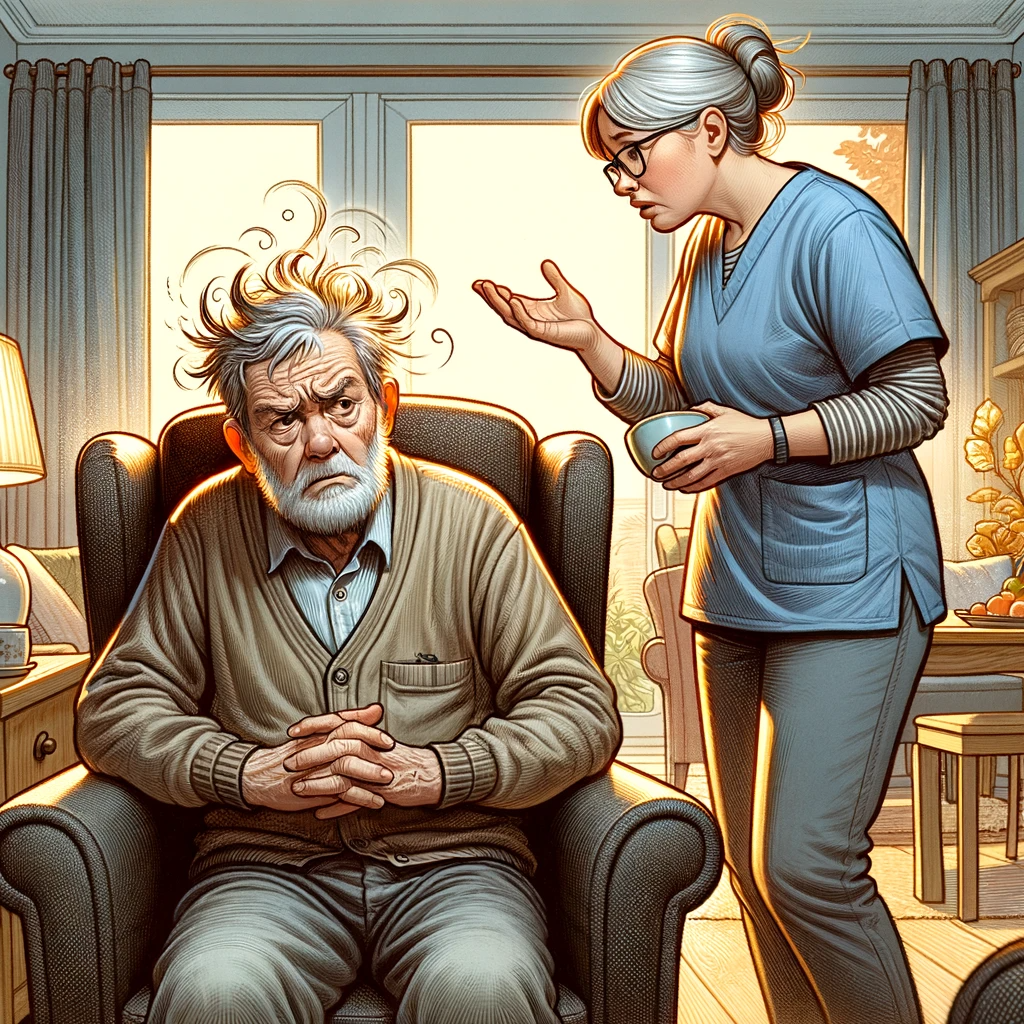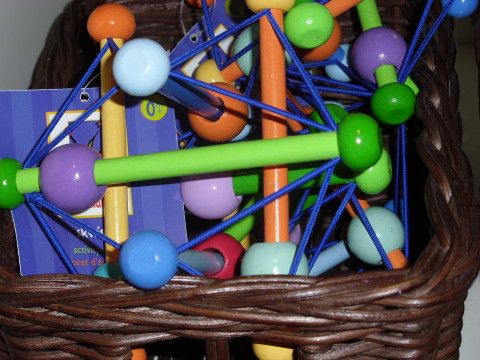Understanding and Managing Dementia Confusion and Alzheimer's Disease
Explore key strategies for managing dementia confusion and Alzheimer's. Learn about recognizing signs, using the Confusion Assessment Method, and adapting daily routines for better care of affected individuals

Dealing with the confusion and cognitive impairment associated with dementia and Alzheimer's disease can be challenging for family members and caregivers. This comprehensive guide aims to provide essential information and practical tips to assist those caring for older adults with severe dementia, including strategies for managing hyperactive delirium and cognitive decline.
Key Aspects of Dementia and Alzheimer’s Disease
- Dementia encompasses a range of conditions marked by a decline in brain cells' function, leading to symptoms like memory loss and increased confusion. Alzheimer's disease, a type of dementia, significantly affects cognitive abilities.
- Early stages of dementia might include symptoms such as sleep issues, loss of track of time, and confusion. In severe cases, individuals may develop delirium superimposed on dementia.
- Factors contributing to dementia confusion can include internal body clock disruptions, urinary tract infections, and even hearing issues that might necessitate the use of a hearing aid.
Recognizing the Signs and Responding to Confusion in Dementia and Alzheimer’s Disease
When caring for individuals with dementia or Alzheimer's disease, it's crucial to recognize the signs of confusion and respond appropriately. These conditions, characterized by cognitive impairment and decline, present various challenges that caregivers and family members must navigate.
Identifying Common Indicators of Confusional States
- Difficulty in Daily Activities: One of the primary signs of dementia and Alzheimer's is the noticeable struggle in performing daily activities. This could manifest as forgetting routine tasks, difficulty in handling simple household chores, or challenges in personal care.
- Fluctuating Cognition: Patients may experience varying levels of awareness and cognitive abilities. On some days or at certain times, they might seem relatively clear-headed, while at other times, they may exhibit significant confusion or disorientation.
- Altered Behaviors: Behavioral changes are common in people with dementia. This could include mood swings, agitation, restlessness, or even aggressive behavior, which are often signs of confusion and cognitive distress.
Utilizing the Confusion Assessment Method (CAM)
- The CAM is a widely recognized tool used in diagnosing and clarifying confusion in dementia patients. It assesses factors like acute onset and fluctuating course of cognitive impairment, inattention, and disorganized thinking.
- This method helps caregivers and medical professionals differentiate between various types of cognitive impairments, such as distinguishing dementia from delirium, which can coexist with dementia in the form of hyperactive or hypoactive delirium.

In-depth Understanding of the Confusion Assessment Method (CAM) in Dementia Care
The Confusion Assessment Method (CAM) is an invaluable tool in the realm of dementia and Alzheimer's care, aiding caregivers and medical professionals in diagnosing and clarifying instances of confusion. This method is particularly crucial in distinguishing between various cognitive impairments, like dementia and delirium, which may present similarly but require different approaches in care.
Key Components of the CAM
- Acute Onset and Fluctuating Course: CAM focuses on identifying sudden changes in cognitive function and how these changes fluctuate over time. In dementia, cognitive decline is typically gradual, whereas delirium often presents abruptly and can vary dramatically throughout the day.
- Inattention: One of the core symptoms assessed by CAM is inattention, where the individual has difficulty focusing, sustaining, or shifting attention. This is a common feature in both dementia and delirium, but the degree and manifestation can differ.
- Disorganized Thinking: CAM evaluates the presence of disorganized or incoherent thinking. Patients may exhibit illogical thought processes, irrelevant conversation, or an inability to maintain a coherent dialogue.
Differentiating Dementia from Delirium
- Dementia vs. Delirium: While dementia is a chronic and progressive disease primarily affecting memory and other cognitive functions, delirium is an acute and often reversible condition characterized by sudden confusion, disturbance in attention, and cognitive impairment. In seniors a urinary tract infection is a common cause of delirium.
- Hyperactive Delirium: This form of delirium is marked by heightened arousal and overactivity. It can be misinterpreted as agitation or restlessness in dementia but requires a different treatment approach.
- Hypoactive Delirium: Often underdiagnosed, hypoactive delirium presents with lethargy and reduced motor activity. It can easily be overlooked or mistaken for depression or severe dementia.
Clinical Application of CAM
Assessment Process: CAM involves a brief and structured assessment that can be conducted in various settings, including hospitals, long-term care facilities, and during routine check-ups.
Training and Skill Requirement: Proper use of CAM requires training and clinical skill, as it involves not only observing symptoms but also interpreting them accurately within the context of the patient’s overall medical history and current condition.
Benefits and Challenges of CAM
Clarifying Confusion: By systematically assessing symptoms, CAM helps in clarifying the nature of the confusion, whether it's due to dementia, delirium, or a combination of both.
Guiding Treatment: Identifying the exact cause of confusion is vital for effective treatment. For example, if a urinary tract infection is causing delirium superimposed on dementia, treating the infection can significantly improve cognitive function.
Limitations: While CAM is effective, it has its limitations, especially in cases of mild cognitive impairment or when symptoms do not clearly point to dementia or delirium.
How a family member may use the CAM
- The Confusion Assessment Method (CAM) is a valuable tool for family caregivers managing loved ones with dementia. While the full application of CAM typically requires medical training, there are aspects of the method that can be useful for caregivers in a home setting.
Here are three examples of how a family caregiver might use elements of CAM in dementia care:
Monitoring for Acute Changes and Fluctuations in Cognitive Function:
Scenario: A caregiver notices that their loved one, who has mild dementia, is suddenly more confused than usual. They seem to be having trouble recognizing familiar faces and places, which wasn't the case just a few days ago.
CAM Application: The caregiver uses the CAM criteria to assess the suddenness (acute onset) of these changes and notes whether the confusion fluctuates throughout the day. This information can be crucial for a healthcare provider to determine if the patient is experiencing a form of delirium superimposed on their dementia, possibly due to an underlying medical issue like a urinary tract infection.

Assessing Inattention and Disorganized Thinking:
Scenario: During conversations, the caregiver observes that their family member with dementia is often unable to maintain focus. They might start talking about one subject and quickly veer off into unrelated topics, or they seem easily distracted by minor noises or movements in the room.
CAM Application: By recognizing these signs of inattention and disorganized thinking, the caregiver can provide this valuable information to healthcare professionals. It aids in assessing the severity and progression of the dementia, and whether any additional cognitive impairments, such as delirium, are present.
Identifying Hypoactive or Hyperactive Delirium:
Scenario: The caregiver notices that their loved one is either unusually lethargic (hypoactive delirium) or overly restless and agitated (hyperactive delirium), which is a deviation from their usual behavior.
CAM Application: Understanding the signs of both hyperactive and hypoactive delirium, the caregiver can observe and document these behaviors. This documentation can be instrumental in helping healthcare professionals differentiate between the symptoms of existing dementia and those of a superimposed delirium, leading to more appropriate treatment interventions.
In each of these scenarios, the caregiver's observations and assessments using elements of CAM can provide critical insights into the health and well-being of the person with dementia. These observations should always be shared with healthcare professionals for proper evaluation and treatment.
Implications for Caregivers and Medical Professionals
- Better Care Planning: Understanding whether a patient’s confusion is due to dementia or delirium (or both) allows for more tailored care strategies, impacting the patient’s overall well-being and quality of life.
- Continuous Monitoring: Conditions like dementia and delirium can evolve, highlighting the need for ongoing assessment and adaptation of care plans.
In summary, the Confusion Assessment Method is a critical tool in differentiating between dementia and delirium, especially in cases where symptoms like cognitive decline, inattention, and disorganized thinking are present. Its application aids in the accurate diagnosis and effective management of confusion in dementia patients, ultimately enhancing the quality of care and support provided by caregivers and health professionals.
Adjusting to Time-Specific Confusion
- Individuals with dementia often experience increased confusion during specific times of the day, a phenomenon sometimes referred to as "sundowning." This typically occurs in the late afternoon and evening.
- Caregivers should be mindful of this pattern and may need to adjust the daily schedule to accommodate these fluctuations. Activities that are more demanding or require higher levels of concentration are better scheduled during the morning when the person is likely to be more lucid.
- Creating a calming environment during these times can also help. This may involve reducing environmental stimuli, like loud noises or bright lights, and engaging in soothing activities like listening to calm music or going for a gentle walk.
Understanding Wandering in Dementia
Additional Considerations for Caregivers
- Understanding that these signs and symptoms are part of the disease process can help caregivers respond with more patience and empathy.
- Regular consultation with healthcare professionals is essential for managing these symptoms effectively. They can offer advice on treatment options, including medication adjustments or non-pharmacological interventions.
- Caregivers should also be aware of their well-being. Managing the demands of caring for someone with dementia or Alzheimer’s can be taxing, and seeking support, whether through family, friends, or support groups, is vital.
In summary, recognizing the signs of confusion and responding appropriately is a key aspect of caring for individuals with dementia or Alzheimer's disease. Utilizing tools like the Confusion Assessment Method and adjusting daily routines to accommodate fluctuating levels of confusion can significantly enhance the quality of care and improve the overall well-being of both the patient and the caregiver.
Managing the Environment and Routine
- Creating a stable environment with low lighting and minimal noise can help reduce confusion and agitation in dementia patients.
- Consistent daily routines and familiar activities can provide comfort and a sense of normalcy, aiding in the well-being of the person with dementia.

Medical Help and Treatment Options
- It's important for caregivers and family members to consult with doctors and healthcare professionals for proper diagnosis and treatment plans. This might include the use of specific medications to manage symptoms.
- Research and systematic reviews can offer new methods and insights into the prevention and prognosis of dementia and Alzheimer's disease.
Practical Tips and Support for Caregivers
- Caregivers should stay informed and aware of the realities of dementia and Alzheimer’s, understanding that patients may experience a different sense of reality.
- Offering support and reassurance, maintaining a calm demeanor, and engaging in gentle conversation can greatly help in managing confusional states.
- Joining support groups, can provide valuable resources and a community of people living with similar challenges.
By understanding the exact cause and symptoms of dementia and Alzheimer's disease, and employing effective strategies for daily care, family members and caregivers can improve the quality of life for their loved ones while managing the challenges these conditions present.
Our Resources section can help you find the information and tools that you need. We have courses, videos, checklists, guidebooks, cheat sheets, how-to guides and more.
You can get started by clicking on the link below. We know that taking care of a loved one is hard work, but with our help you can get the support that you need.
Click here to go to Resources Section now!
Rummage Bags Dementia Decrease Stress and Anxiety
You might also like this article:






